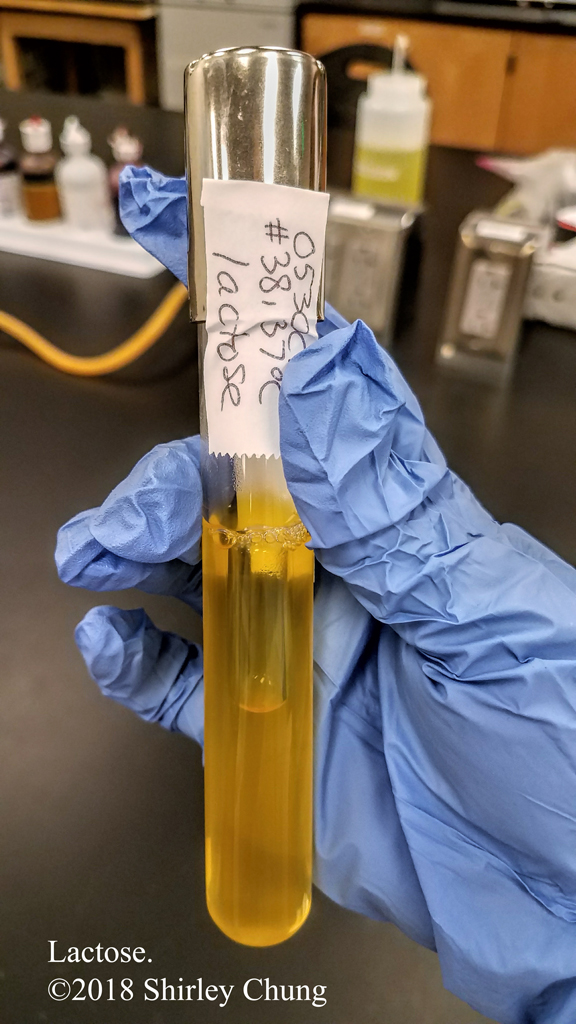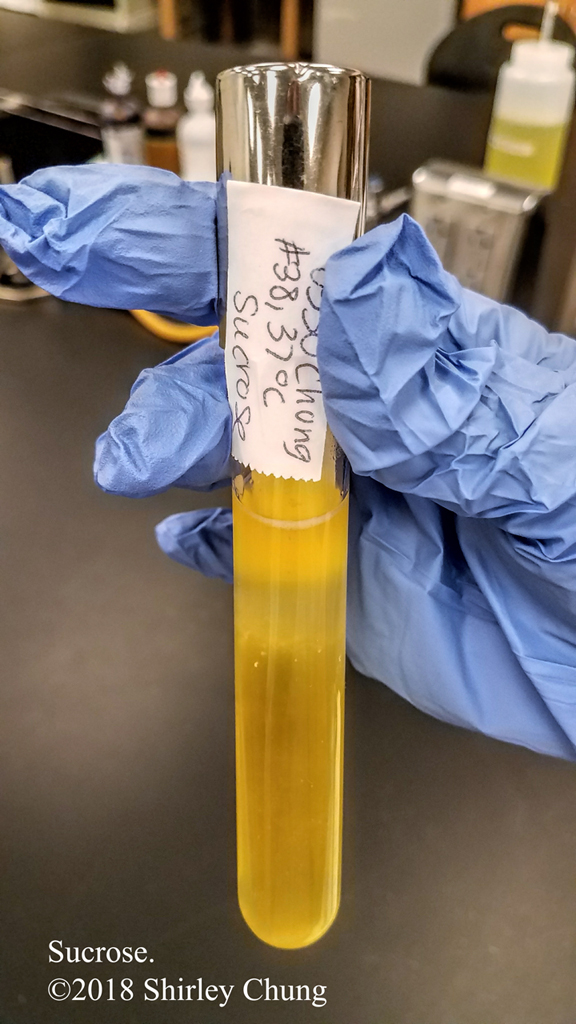Carbohydrate Fermentation Tests (Cappuccino & Welsh, 2017).
Description. Different bacteria have different carbohydrate fermenting profiles. The series of three carbohydrate fermentation tests demonstrate an organism’s ability to ferment dextrose (glucose), lactose, and sucrose with the production of acidic waste-products and/or carbon dioxide gas (observable via Durham tube inserted upside-down in the sugar broth medium). Facultative anaerobes usually are able to ferment at least one carbohydrate. Carbohydrate broths prior to inoculation are reddish. After inoculation (and incubation) the phenol red pH indicator in the medium turns yellow (positive) if acidic waste-products were produced from carbohydrate fermentation (Cappuccino & Welsh, 2017). A gas bubble may or may not appear in the Durham tube as well.
Clinical significance. The carbohydrate fermentation profile can help in identifying pathogens. For example, lactose fermentation is characteristic of Citrobacter, Escherichia, Enterobacter, and Klebsiella (Microbe Online, 2013).
Summary of main steps. It is assumed that the reader knows aseptic technique and basic inoculation.
- Be sure the correctly label the carbohydrate broth tubes as they all look the same initially. Use aseptic technique throughout.
- Inoculate each carbohydrate broth with one loopful of bacterial broth culture.
- Incubate all tubes at 37°C for 24-48 hours. Observe results.
The following photos are the results for C. freundii.
Reference
Cappuccino, J. G., & Welsh, C. (2018). Microbiology: A laboratory manual.
Microbe Online. (2013, October 1). Enterobacteriaceae family: Common characteristics. Retrieved from http://microbeonline.com/seven-common-characteristics-family-enterobacteriaceae/



